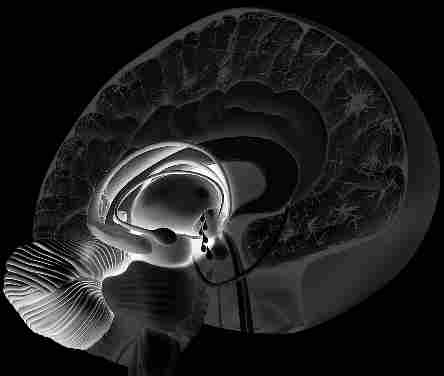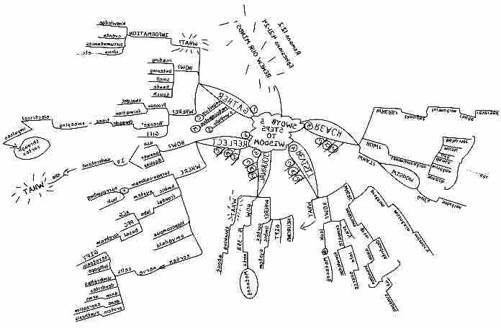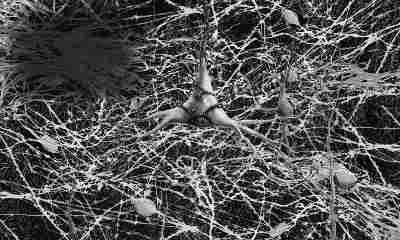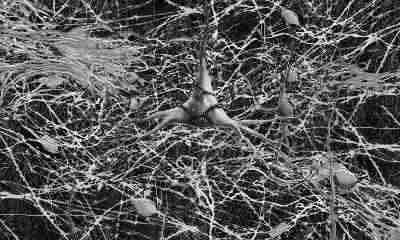Switch on Your Brain: The Key to Peak Happiness, Thinking, and Health (26 page)
Read Switch on Your Brain: The Key to Peak Happiness, Thinking, and Health Online
Authors: Dr. Caroline Leaf
Tags: #Health; Fitness & Dieting, #Christian Living, #Mental Health, #Christian Books & Bibles

4. It includes body awareness, emotion regulation, and
sense of self that changes the brain positively.
5. Keys 1 through 8 really kick in at this point.
6. Huge activity in the center and front of the brain hap-
pens when we focus our thinking.
7. Neuroplasticity is dominant because, as you focus your
thinking, you are starting to redesign your brain.
179
_Leaf_SwitchOnBrain_LS_mw.indd 179
5/16/13 1:34 PM
_Leaf_SwitchOnBrain_LS_mw.indd 180
5/16/13 1:34 PM
13
Write
Step 3
Your brain writes through genetic expression, so when
you write things down on paper or type into your
computer or iPad or whatever gadget you use, you
are mirroring this process. Writing down your thoughts is
important in the Switch On Your Brain technique because
the actual process of writing consolidates the memory and
adds clarity to what you have been thinking about. It helps
you better see the area that needs to be detoxed by allowing
you to see your nonconscious and conscious thoughts in a
visual way. It is almost like putting your brain on paper.
QUESTION: What does writing do to help your
detoxing?
The basal ganglia, the cerebellum, and the motor cortex are
involved in this process. Let’s talk about the basal ganglia first.
The Industrious Basal Ganglia
Nestling between the cerebral cortex (on the outside of the
brain) and the midbrain (in both the left and right hemispheres)
181
_Leaf_SwitchOnBrain_LS_mw.indd 181
5/16/13 1:34 PM

THE 21-DAY BRAIN DETOX PLAN
basal ganglia
basal ganglia
cerebellum
are intricate bundles of neurological networks that are in-
terconnected with the cerebral cortex. These bundles are the
basal ganglia. The basal ganglia also put their imprint on the
process of thinking and learning by helping the hippocampus,
frontal lobe, and corpus callosum turn thought and emotion
into immediate action.
Remember, all the parts of the brain work together in har-
mony; the process never involves just one structure alone. The
basal ganglia do this by helping to ensure the memory gets built
into the trees of the cerebral cortex. They also smooth out fine
motor actions and set the idle rate for anxiety. Together with
the motor cortex of the brain, the cerebellum helps you write
down the information you have just understood. The cerebellum
also helps with cognitive fluency, which is the ability to flow
through a thought process smoothly as you evaluate the options.
Obviously, all your brain structures become very involved in
the writing process because writing is a complex cognitive and
metacognitive process requiring deep thinking. For example,
the structures in the frontal lobe become highly active in the
182
_Leaf_SwitchOnBrain_LS_mw.indd 182
5/16/13 1:34 PM
Write
thinking and decision-making part of writing; the temporal
lobe and hippocampus become involved in calling up existing
memories; the emotional parts of every activated thought gen-
erate feelings; and the structures in the middle of the brain deal-
ing with emotional perceptions work harder, just to mention
a few things. The complexity God has designed is beautiful.
QUESTION: What do the basal ganglia help with?
How to Write Your Thoughts
How you write down your thoughts is very important because
there are ways of writing down information that work more
effectively with your brain processes than traditional linear
and one-color note taking. My workbook and DVD series
called
Switch On Your Brain
1 provides ideas on how to be
brain-compatible when you are writing.
I always encourage anyone who keeps a thought journal to
be creative with their notes. I also encourage anyone moving
through the process of detoxifying thoughts to be playful with
their thought journal. Don’t limit yourself to just writing in
straight lines. If there are word associations or groupings
that seem natural as you focus on information, group those
on a page. Draw a picture or diagram to go along with that
thought expression. Add color or texture. Pour out the im-
pressions in your mind onto the page.
The Metacog
When I am helping students develop their learning and reten-
tion skills, I teach them a method I’ve developed called
Metacog
.
The name might seem a little odd, but the process is fascinating.
183
_Leaf_SwitchOnBrain_LS_mw.indd 183
5/16/13 1:34 PM

_Leaf_SwitchOnBrain_LS_mw.indd 184
5/16/13 1:34 PM
Write
It is simple: Group patterns that radiate from a central
point. Each pattern linked to the central point creates a
branch. Then continue to develop each of the branches by
linking more detailed patterns. The process can continue until
you have explored every nuance of your thought.
This method of pouring out your thoughts encourages
both sides of the brain to work together to integrate the two
perspectives of thought—the left side of the brain looks at
information from the detail to the big picture and the right
side of the brain from the big picture to the detail.
For full understanding to take place—which will result in
the conversion of short-term memory to long-term mem-
ory—both perspectives of thought need to come together.
So a Metacog is a way of seeing your thoughts on paper
and evaluating the way you think and what you are thinking
about. It is a great way of following your thought patterns
so you can detox your thought life.
1. The actual process of writing consolidates thoughts
(memory).
2. Writing adds clarity to what you have been thinking
about.
3. Writing helps you better see the area that needs to be
detoxed by allowing you to see your nonconscious and
conscious thoughts in a visual way.
4. Keep a thought journal.
5. Pour your thoughts out and only sort them in the next
step—the revisit.
185
_Leaf_SwitchOnBrain_LS_mw.indd 185
5/16/13 1:34 PM
_Leaf_SwitchOnBrain_LS_mw.indd 186
5/16/13 1:34 PM
14
Revisit
Step 4
R evisiting what you have written will be a revealing
process. This is exciting as well because it is a pro-
gressive “moving-forward” step; you revisit where
you are and look at how to make change happen.
After you have gathered awareness and done your focused
reflection and writing, you will have stimulated major neu-
roplastic activity, putting your brain in a highly active and
dynamic state for marvelous and positive change. This is the
perfect state to be in to rewire.
This step is all about you wiring in what changes you want.
You get to design your new healthy thought to replace the
toxic thought you want to get rid of. It’s all about redesign-
ing, reorganizing, and re-creating the specific thought you
are working on.
Thoughts Become Plastic Enough to Be Redesigned
Earlier I explained that when thoughts are activated and
pushed into the conscious mind, they enter a labile state—
meaning they can be altered. When a memory is in this plastic
187
_Leaf_SwitchOnBrain_LS_mw.indd 187
5/16/13 1:34 PM


THE 21-DAY BRAIN DETOX PLAN
Healthy Memory: Adapted Graphic Sketch
Toxic Memory: Adapted Graphic Sketch
state, it can be modified, toned down, or retranscribed and
reconceptualized by interfering with protein synthesis—an
important molecular process in thought building. This is
where you do some serious brain surgery (see chap. 3).
This is exciting, because once the thought is in the con-
scious mind after the gather, focused reflection, and writing
188
_Leaf_SwitchOnBrain_LS_mw.indd 188
5/16/13 1:34 PM
Revisit
you can redesign the thought and change it or keep it the
same but make it stronger. You choose. Obviously, if you
are doing the 21-Day Brain Detox Plan, you have chosen to
change the negative, toxic thoughts.
God builds into the science of thought this amazing ability
to renew our minds, which in turn rewires the brain. This
means that each time a thought dominates your conscious
mind, you can do something with it. You are not a victim of
your biology; you can control your reactions to events and
circumstances. You can choose to keep your thinking the
same or change it. Either way, protein synthesis happens. The
toxic memory will either be changed or be strengthened. This
process is the major role of the revisit stage.
QUESTION: How can thoughts be redesigned?
How to Redesign Thoughts
In the revisit, you evaluate what you have written down and
work out what the healthy new thought you want to build is
going to be. You work out the way forward, a little at a time.
Remember, you have twenty-one days to do this, so don’t try
to do it all in one day. Visualize what you want the end result
to be, but get there in 21 days.
Not only do you have the opportunity to examine your
thoughts on paper, but you have the opportunity to rethink
through your reaction to the information—evaluating how